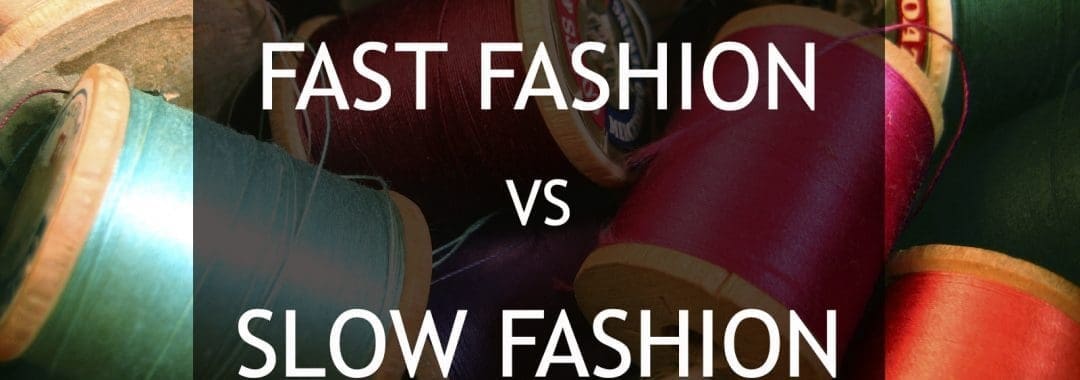Fast Fashion

Fast Fashion is the process of imitating trends and styles from the big name designers on the runway. These are often utilised by fashion conscious individuals at a low price.Although this enables one to access fashion cheaply, it holds a Negative effect to the environment and for those creating the garments.
Fast Fashion can produce up to eleven different collections a year, against the standard two of a fashion house. These collections can have a turnaround time of just two weeks from paper to production and retail.And still have a very small price tag. It is surprising to see how this system is still conceivable. Fast Fashion is possible because of its evident unethical technique.
Slow Fashion
Slow fashion aims to decrease the speed of production, consumption and disposing by placing greater appreciation on one’s purchase. Carefully considering an acquisition, connecting with clothes instead of having just another addition to the wardrobe which may be only worn for one occasion.Slow Fashion considers the materials used, how the garment is made and who is making it, in order to be ethical without compromising on quality.
What is Fast Fashion?
Fast Fashion describes a business model where as many fashion collections as possible are brought to market as quickly as possible. The collections are based on the latest trends, fuelled by what’s in vogue with celebrities and designers. These trends are then imitated in the shortest possible time, produced in low quality and at a very low price to shift the items as quickly as possible until the next trend arrives.
What is Slow Fashion?
Slow Fashion is a term that describes a sustainable and conscious approach to fashion production and consumption. Garments are mostly made from environmentally friendly materials or even recycled textiles. Clothes are typically more durable and of higher quality. Attention is also paid to environmentally friendly production.
When did fast fashion begin?
Fashion has been accelerating since the industrial revolution with the invention of the sewing machine. As a result, ready-made clothing became popular. Ready-made clothing offers various clothing items in a range of sizes for us to choose from. This allowed the middle class to access fashion more affordably. However, homemade and custom dressmaking and tailoring still remained common until about a century later.
During World War II, fabric had to be rationed and styles became simpler. People became more accepting of mass-produced clothing. With mass-production came lower working standards. The world’s first major safety incident for garment industry workers occurred in 1911 when 146 workers died in a fire at New York’s Triangle Shirtwaist Factory.
Fast fashion is a term used to describe a highly profitable business model based on replicating catwalk trends and high-fashion designs, and mass-producing them at low cost. The term ‘fast fashion’ is also used to generically describe the products of the fast fashion business model.
Slow Fashion
Slow fashion is also about returning to a personal relationship with fashion. One where trends and seasons don’t matter, but where your ethics and aesthetics seamlessly unite, and you can escape the stress of constant consumption, focusing on the style that truly appeals. Slow fashion is about designing, producing, consuming and living better. Slow fashion is not time-based but quality-based (which has some time components). Slow is not the opposite of fast – there is no dualism – but a different approach in which designers, buyers, retailers and consumers are more aware of the impacts.
Slow Fashion vs Ethical Fashion & Sustainable Fashion
Some of my favorte ways to describe slow living are that it’s conscious, intentional, and holistic. I believe the same characteristics apply to slow fashion intentionally considering the holistic lifecycle of a product from its ideation, to raw materials, to manufacturing/production, to its supply chain/shipping, and ultimately with consumer use and end-of-life disposal.
There seems to be a lot of confusion between slow fashion, ethical fashion, and sustainable fashion (or eco fashion). This is understandable because there is a lot of overlap between these concepts. To keep things simple, here’s how I’ve seen ethical fashion and sustainable fashion defined:

